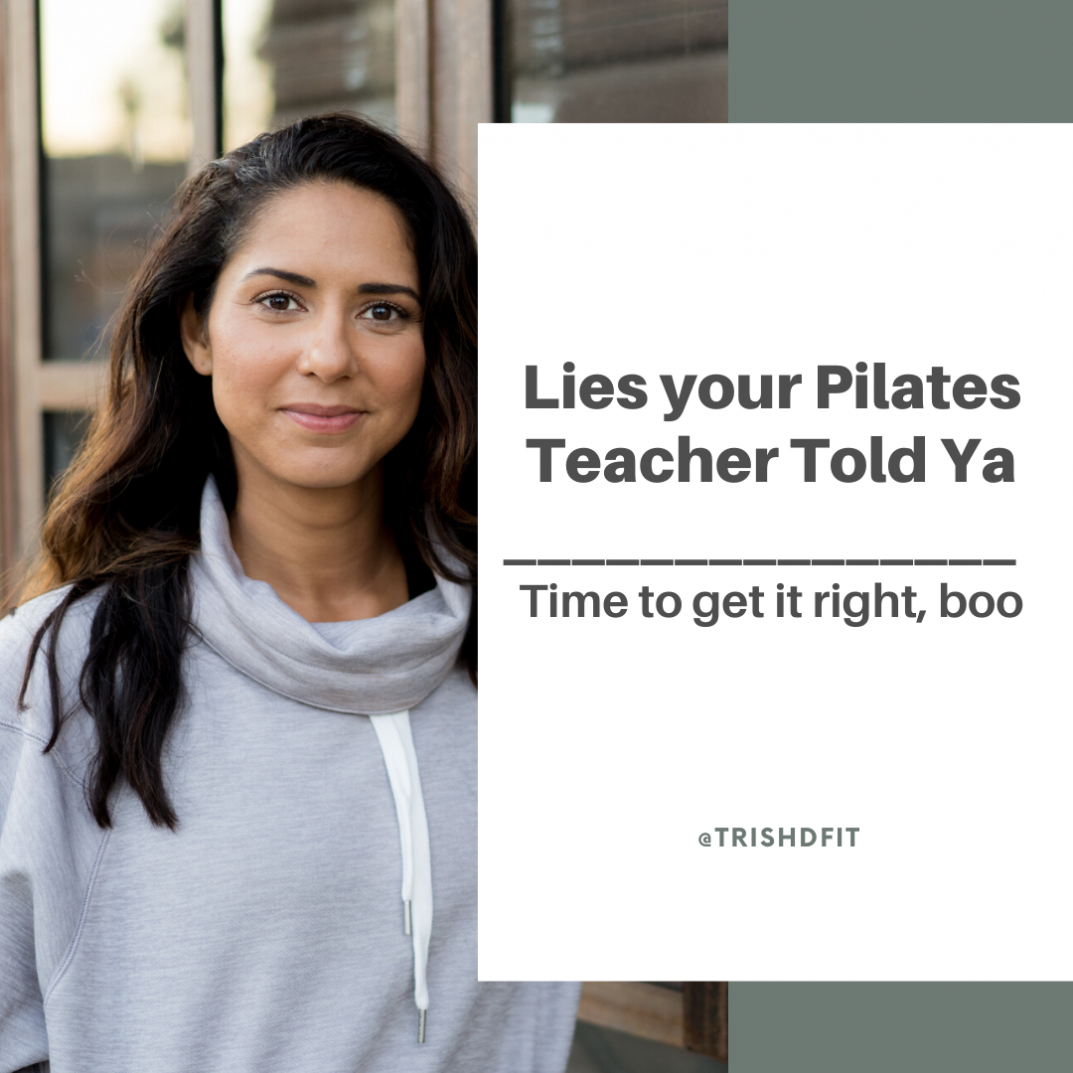I’ve never been one for dogma, particularly the ones in strength training, diet, and Pilates communities. It has a way of alienating people, and I find that everyone has a personal right to ask question and determine what works best for them.
In Pilates in particular, there are some beliefs or cues that are passed down from teacher to student with little to no question. This is very dangerous terrority to be in. As a consumer or trainee, it’s your duty to peel back the layers of what your Pilates instructor tells you, ask questions, and think for yourself.
⠀⠀⠀⠀⠀⠀⠀⠀⠀
As a teacher, it’s your job to question what you’re taught and draw up your own conclusions based on science and facts, not because “it’s the way so-and-so does it.”
Anyone that tries to shame you for questioning or disagreeing with the old way of thinking is simply projecting their beliefs onto you. You are not obligated to follow their way or accept everything that they teach. As a Pilates practitioner and instructor, there are a few myths I have never agreed with in Pilates. They make no sense or they are oversimpliefied to the point of being harmful.
Let’s do a little myth busting, shall we?
Top Three Pilates Myths Pilates Instructors Tell You
Myth #1
⠀⠀⠀⠀⠀⠀⠀⠀
⠀⠀⠀⠀⠀⠀⠀
Reality Check: Sure, Pilates will do wonders for your abs, but to describe the method as “a workout for your core” hardly does the method any justice. The abdominal muscles are just one piece of the puzzle, and one muscle group out of many others. What makes the Pilates method so effective is that it teaches you to engage all your core muscles at once. This includes your abdominals, the deep muscles of the back and core, your diaphragm and yes, your vaginal muscles (a.ka. the pelvic floor). Together, they work to make your abdominals look and feel stronger, but also improves your body’s alignment, strength, and functionality all at once.
Let’s not forget that Pilates does a lot more than just work your abs. It improves overall flexibility, strengthens the tendons and ligaments around the joints, ensures better movement, and works really well for rehab purposes.
⠀⠀⠀⠀⠀⠀
Myth #2

Reality Check: This one is a lot like the “Carbs are bad for you” myth in nutrition circles. It reeks of predatory marketing and diet culture, and continues to perpetuate old beliefs that smaller, taller, leaner, or tinier are better for women. You see this one a lot on Pilates studios sites, and typically those are the ones I avoid. It’s perfectly fine to want leanness as a goal, but to say Pilates will elongate your body is a straight up lie.
Here’s what really happens.
Genetics play a significant role in the length of your muscles and bones. There is simply nothing to be done about that. I am 5′ 5″ with thick thighs and a Brazilian butt. That won’t disappear simply because I decide to do Pilates 6 days a week. However, Pilates will give you a sense of length as your muscles start to open up and you gain flexibility. Indeed, you will feel taller because your posture will improve and you’ll feel more stretched out. As one of my clients often says after a session “I feel ironed out.” A Pilates workout will make your body feel like you’ve ironed out all the kinks and wrinkles in your body. This is where feeling taller and leaner comes up.
As for the bulk, Pilates does not use heavy resistance training or operate as hypertrophy training. If adding muscle size is a concern for you then you will be fine with Pilates alone, but let’s stop pretending like Pilates is the only way to add definition to your body without bulking. Lifting weights also works well to add shape to your body and no, it doesn’t make women bulky either.
Myth #3

⠀⠀⠀⠀⠀⠀⠀⠀⠀
Reality Check: The old ‘imprint the spine’ cue is by far the worst. Considering no body is exactly the same, this cue pulls an individual out of her natural alignment and moves her inefficiently. The imprint may be appropriate for some but not all bodies, but it’s often used as a universal cue in Pilates classes.
A better alternative for an individual with an excessive low back arch is to place a rolled up towel under his or her low back. This is much more supportive than the imprint and puts the individual in a better position to conduct rolling exercises from the floor. That said – STOP JAMMING YOUR BACK INTO THE FLOOR. It’s not the right way to engage your abdominals, to brace, or to move optimally.
I can assure you that there a many more cues and beliefs that could use the ol’ boot in Pilates. Ultimately, you learn more as you practice and experience a variety of teachers and teaching styles. Don’t be afraid to experiment.


Comments 1
Pingback: Stuff to Read While You're Pretending to Work: 7/17/20 - Tony Gentilcore